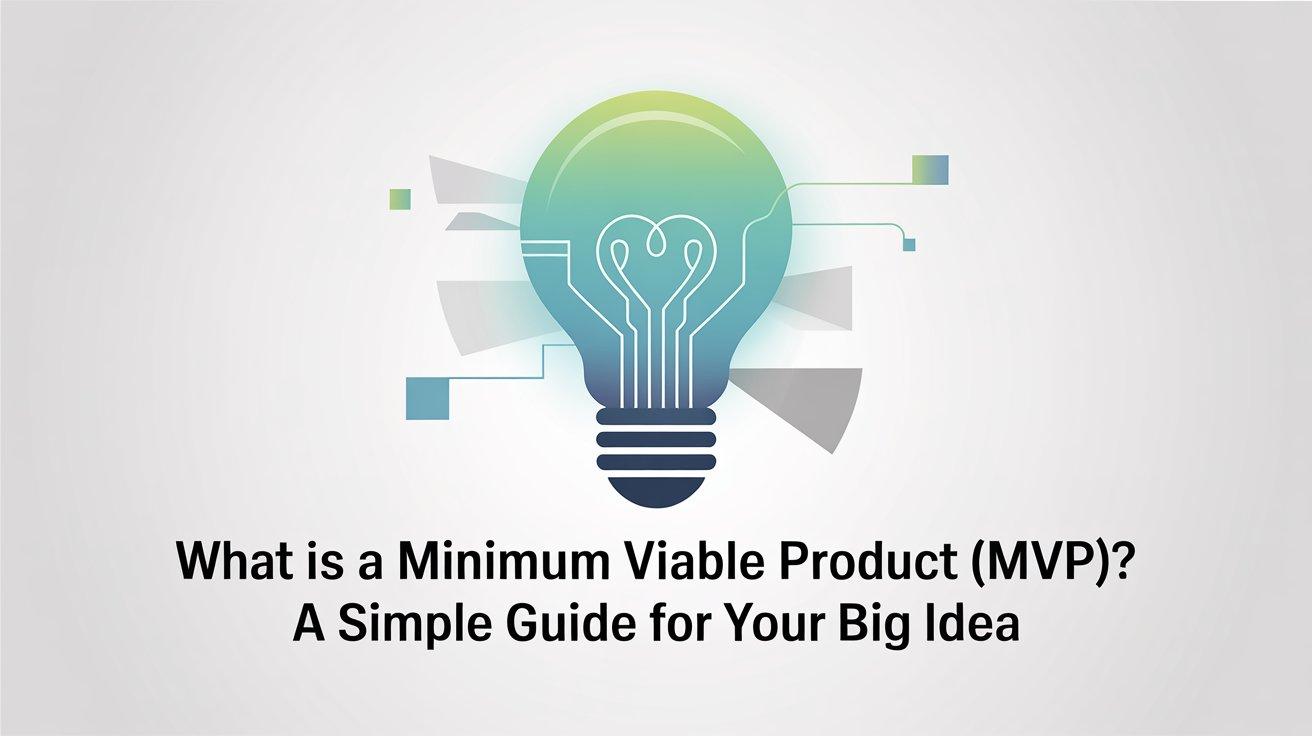What is a Minimum Viable Product (MVP)? A Simple Guide for Your Big Idea

Introduction: More Than Just a Buzzword
If you're interested in startups, you've probably heard the advice, "just build an MVP." When people hear this, they often think it means "go code an app." But making that assumption—especially in markets like Nigeria—can be the "fastest way to waste your time and money."
This guide will break down what a Minimum Viable Product (MVP) truly is in a simple, straightforward way, helping you understand how to test your big ideas smartly.
1. The Core Idea: What Exactly is an MVP?
An MVP is the simplest version of your idea that allows you to test whether people actually want it.
It’s not about building a full-featured product; it's about focusing on the absolute essentials to achieve a specific goal. Think of an MVP as having three core characteristics:
- It's about Learning: The primary goal is to learn quickly whether your idea solves a real problem for people.
- It's about Validation: It's designed to validate the demand for your idea with the least amount of effort and cost.
- It’s an Experiment: Treat your MVP as the quickest and cheapest experiment you can run to prove your core assumption: that people need your solution.
Now that we know what an MVP is, let's explore why this simple concept is so powerful for new entrepreneurs.
2. The "Why": The Purpose of Building an MVP
The purpose of an MVP is not to build a perfect product. It's to test your most critical assumptions before you invest significant time, money, and energy into building something nobody needs.
An MVP helps you achieve several key goals:
- Test for a Real Problem An MVP proves that you are solving a genuine, painful problem for a specific group of people. For example, when Paystack first launched, their MVP wasn't a complex platform with dozens of features. It was a simple tool that "solved a painful problem" for Nigerian businesses wanting to accept online payments. That initial focus was all they needed to prove their value.
- Validate Willingness to Pay A great idea is only a great business if people are willing to pay for it. An MVP forces you to answer the most important question early on: "What’s the cheapest, fastest way I can test if people will pay for this?" This question shifts your thinking from 'builder' to 'business owner.' An idea is not a business until someone pays for it.
- Avoid Wasting Time and Money The biggest risk for any new idea is spending months building a beautiful, feature-rich product that nobody actually wants. An MVP is your safeguard against this, allowing you to confirm there's a real need before you commit to full-scale development.
Understanding these goals helps us avoid some very common, and costly, misunderstandings about the MVP.
3. Clearing Up Confusion: Common MVP Myths vs. Reality
Many aspiring founders get the concept of an MVP wrong, leading them to either launch too little or wait far too long. Here’s a clear breakdown of the myths versus the reality.
|
The Myth |
The Reality |
|
An MVP is a "half-baked app" that nobody will use. |
The goal is to learn quickly, not to impress people with perfect design or dozens of features. |
|
You must make your product perfect before you launch it. |
An MVP is the simplest version of your idea needed to test if it solves a real problem. Waiting for perfection is a mistake. |
To see these principles in action, let's walk through a practical, real-world example.
4. An MVP in Action: The Campus Food Delivery Idea
Imagine you have an idea for a food delivery app specifically for your campus. Instead of spending six months coding, you could build what the source calls a "Nigerian-style MVP" in a single afternoon. This approach is powerful because it cleverly leverages a ubiquitous, low-cost platform like WhatsApp instead of requiring immediate, capital-intensive app development.
Here’s how:
- Start a WhatsApp group with potential customers from your campus.
- Share a menu from a single local restaurant in the group chat.
- Take orders manually through direct messages.
- Deliver the food yourself and collect payment.
This simple process is a perfect MVP. It requires no code and almost no money, yet it tests your core assumption. If students actually order, you’ve validated the idea. You have proven demand exists before ever writing a single line of code. Only then does it make sense to invest in building an app.
This simple, low-cost approach is a model you can use for almost any idea.
5. Conclusion: Your Idea's First, Smartest Step
If you remember only one thing from this guide, let it be this: Remember, an MVP is about testing assumptions, not building a perfect product.
Before you get lost in designing features or hiring developers, take a step back. If you have a startup idea, ask yourself this one critical question:
"What’s the cheapest, fastest way I can test if people will pay for this?"
The answer isn't always an app. It could be a simple WhatsApp group, a Google Form, a basic landing page, or even just direct conversations with potential customers. Don't wait for perfection; start testing, start learning, and build smarter.

- Real Estate
- How Tos
- History and Facts
- Business
- Exclusive Interviews
- Art
- Causes
- Crafts
- Dance
- Drinks
- Film
- Fitness
- Food
- Games
- Gardening
- Health
- Home
- Literature
- Music
- Networking
- Other
- Party
- Religion
- Shopping
- Sports
- Theater
- Wellness



